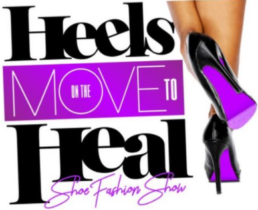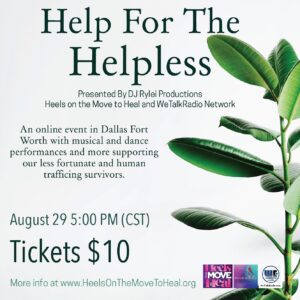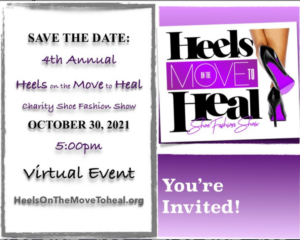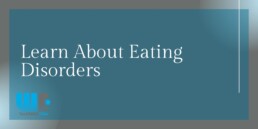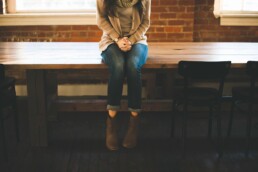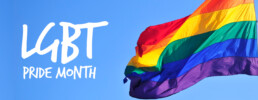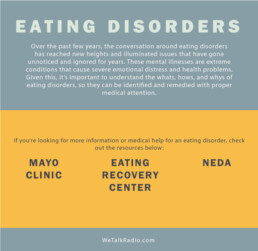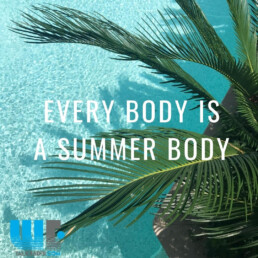What Are The Best Resources For People With Disabilities? - Disability Awareness Month 2021
What Are The Best Resources For People With Disabilities?
- Disability Awareness Month 2021 -
July 30, 2021
By: Geoffrey McMain
Edited By: Kaitlin Graham
Oftentimes it's those who are most underprivileged who lack the resources to truly thrive, which is especially true for people with disabilities, who are too often under-supported by society. Here are a few resources to help alleviate some of the pressure experienced by those with disabilities.
USA Gov

The US federal government offers a plethora of resources for disabled people including housing assistance, healthcare resources, and work programs. This portal contains all the initiatives the national government provides for the disabled.
Olmstead Rights
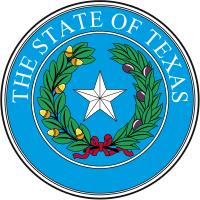
This non-profit focuses on education of disabled rights and legal advocacy. They also have a list of Texas based resources with everything from advocacy groups to crisis centers for people with disabilities.
REACH

REACH is a national organization designed around a three-pronged approach to helping those with disabilities. This approach focuses on communication, education, and housing, which they offer a number of services and programs to support.
Texas Parent to Parent

The foundation of Texas Parent to Parent is its parent-to-parent support model, wherein parents of disabled children talk to one another, offer each other services, and provide education. Their approach is driven by parents and for parents, with their network serving as a backbone for many families with disabled children.
Disability Rights of Texas
Disability Rights of Texas is a civil rights organization dedicated to fighting for the legal rights of people with disabilities. They primarily provide direct legal assistance and pro bono work by lawyers to the disabled in court battles.
What To Know About Heels On The Move To Heal
What To Know About Heels On The Move To Heal
July 27, 2021
By: Geoffrey McMain
Edited By: Kaitlin Graham
What is Heels On The Move To Heal?
Heels on the Move To Heal is a Dallas based nonprofit organization dedicated to
spreading awareness and education on sexual assault, domestic abuse, and human
trafficking. They also offer a number of resources and events to support and empower
victims.
Help For The Helpless Charity Showcase
Heels on the Move To Heal is hosting their Help For The Helpless Youth Charity
Showcase event on August 29th: presented by Heels on the Move To Heal, DJ Rylei
Productions, and WeTalkRadio Network.
This online event will support human trafficking survivors and the homeless community. It will feature dance performances and other supporting creative acts.
The Help for The Helpless Youth Charity Showcase will take place Sunday,
August 29th, from 5:00 PM - 6:30 PM CDT.
Tickets can be purchased for $10.00 online at Eventbrite. Don’t miss this incredible event!
Click here to purchase your ticket today!
4th Annual Heels on the Move to Heal Charity Shoe Fashion Show
Be sure to check out Heels on the Move To Heal at heelsonthemovetoheal.org.
“Heels on the Move To Heal is a Texas (Dallas) 501c3 non-profit organization that
strives to bring awareness to domestic abuse/sexual assault and/or human trafficking
while empowering and supporting survivors. With a passion to protect our youth, we
created Youth On The Move To Heal to promote awareness and educate youth on
domestic violence while giving them a platform to be creative. We have educational programs and initiatives that allow the youth to
create and produce local events. They have the experience of being a show emcee, performer,
producer, DJ, photographer and videographer.”
Heels on the Move To Heal is presenting their annual charity event virtually on Saturday, October 30, 2021 at 5:00 PM CDT. Visit eventbrite.com to purchase your ticket! Prices start at $15.00.
Follow Heels on the Move To Heal on social media for updates!
6 Size Inclusive Clothing Brands - Body Positivity 2021
6 Size Inclusive Clothing Brands - Body Positivity 2021
7/23/2021
By: Geoffrey McMain
Edited By: Kaitlin Graham
In recent days, numerous fashion and clothing brands have begun adopting size-inclusive postures, expanding the discussion around body positivity and self-love by offering great-looking clothes for all sizes. Here are a few size-inclusive brands that you can support today!
Universal Standard
Since its start in 2015, Universal Standard has offered clothing essentials for people of all sizes. This brand was built on the idea of size-inclusivity and responded to a lack of access for many women by offering a range of clothes from size 00 to 40: a commitment that continues to this day.
H&M
H&M is well-regarded as a place to get trendy clothes for a reasonable price, and their recent H&M+ line has extended their collection to a new group of people with expanded sizing options for their best wares.
Good American
Good American has had inclusive sizing since its inception in 2016 but has since begun offering inclusive sizing for swimwear, bodysuits, and activewear, making this forward-thinking brand a great choice for anyone looking to spend time outdoors.
Big Bud Press

With ethically sourced materials, this L.A. grown company specializes in unisex clothes, all offered within an inclusively sized framework.
Madewell
Madewell’s inclusive sizing initiative started in 2018 with limited selection, but since then, Madewell has expanded their program to every category of daily ware they have.
Girlfriend Collective

Girlfriend Collective produces all their clothes with a sustainable model that uses solely recycled materials, giving their size-inclusive collection of activewear an ethical bent focused on environmental sustainability.
Hackwith Design House
With an emphasis on formalwear, Hackwith Design House handcrafts all their clothes in-house: their entire selection of dresses, pantsuits, and more, available for people of all sizes.
Why I Dropped Out of College and Took Classes Online - Keely's Disability Awareness Month Story 2021
Why I Dropped Out of College and Took Classes Online -
Keely's Disability Awareness Month Story 2021
7/20/2021
By: Keely Messino
Edited By: Kaitlin Graham
The ability to go to college should be a right. When I first started college, I had plans of becoming a bereavement counselor, who is a counselor who helps people whose loved ones have passed away. I started taking college classes at a college not far from where I grew up.
The campus had charming wrought iron fences, Victorian-style buildings, and a beautiful on-campus Chapel. I was very excited about beginning a new adventure.
That didn't last long.
Professors would sometimes refuse to give me three extra minutes to go to the bathroom or have someone take notes for me.
I had asked to live in a dorm, but the campus had no wheelchair-accessible doors. Not being able to open a door would have made going to class or getting food on a campus impossible.
I have cerebral palsy and have to use mobility devices. However, the campus was not accommodating to that.
There were two elevators, and they didn't often work; the straw that broke the camel's back for me was having to climb up a flight of stairs while many students stared at me. I called to complain, and the campus director told me that they could not accommodate me, something they didn't tell me for over a year while I was trying to attend this school.
I tend to make some of my best decisions when I'm under pressure. Dropping out and going to Art School online was one of my best decisions. I have met many people who have similar disabilities to mine and are living their best lives.
When I was attending the college that I originally attended, I had the opportunity to take an internship. Unfortunately, they only offered one internship. But, there was no other option. The internship was over an hour away and I turned it down because I needed to find something closer to home.
Pursuing a degree online allows me to pursue many internships, much like the one I have with WeTalkRadio Network. Going to online school has been the biggest blessing I could have imagined and has opened so many doors for me.
However, part of me still wishes that I got the college experience that I deserved. I sometimes wonder where I would be now if I had a more traditional college experience. Would I have gotten to study abroad like I dreamed I would? Would I have a job as a therapist as I had planned?
If you or someone you are close to is facing similar issues to the ones I faced, don’t be afraid to go in a different direction. Sometimes dropping out or transferring is the best thing you can do.
To find resources for college students with disabilities, visit publicservicedegrees.org.
Resources For People With Eating Disorders
Resources For People With Eating Disorders
July 14, 2021
By: Geoffrey McMain
Edited by: Kaitlin Graham
Eating Disorders are serious emotional and medical problems that are typically best dealt with professional support and therapy. Here is a collection of qualified national and local organizations to help those with Eating Disorders or body image issues.
National Resources
National Eating Disorders Association (NEDA)

NEDA is the nation’s largest nonprofit dedicated to providing support for eating disorders. Some of their services include: Screening, a national helpline, treatment programs, and support groups.
Eating Recovery Center

The Eating Recovery Center is an international organization that offers comprehensive treatment for eating disorders. “Eating Recovery Center’s mission is to provide the very best care to patients, families and providers of care in the treatment of, and recovery from, eating disorders and related conditions.”
National Association of Anorexia Nervosa and Associated Disorders (ANAD)

ANAD has been offering free services for eating disorders for 45 years, with their strategy focusing on peer support at every stage of an eating disorder.
According to their website, “The Alliance for Eating Disorders Awareness is the leading national nonprofit organization providing referrals, education, and support for all eating disorders.”
Local Resources
Eating Disorder Solutions

Eating Disorder Solutions operates a full residential treatment center located in North Dallas where they offer not only residential care but also outpatient services. Their Chimney Hill Center is renowned as a safe and comfortable environment dedicated to helping patients in-need.
Santé Center

The Santé Center, located in Argyle, Texas, has been providing eating disorder and addiction treatment since 1996. Their mission is “to address addictive behaviors and associated conditions with an integrated addiction treatment model, drawing from traditional and innovative approaches.”
UT Southwestern Center for Pediatric Eating Disorders
UT Southwestern’s Center for Pediatric Eating Disorders offers partial hospitalization and intensive outpatient programs aimed at adolescents under the age of 18.
The Eating Disorders Program at Texas Children’s Hospital has been providing treatments for eating disorders for decades that include 24 hour on-call coverage, and both inpatient and outpatient care. Their focus is on an interdisciplinary approach to care serviced by a team of professionals with a wide array of skills.
Motherhood and depression
I believed for nine whole years that I am not a good enough mom. I kept telling myself repeatedly that being a stay-at-home mom may not be the best thing for me, but it is best for my family, for my child. I must be able to stay happy with this job, or what would others especially my husband thinks of me. Still, I could not help burying that deep-down desire of having some individual identity of my own as well outside of motherhood. A mom friend of mine used to wake up crying every morning and always thought that she was just having a bad day. She tried medications and communicating. She finally saw a therapist and joined a school to dig herself out of the darkness.
Like me or my friend, too many American women experience emotional crises as they navigate motherhood. Hormones are often considered the key reason for compromised mental health in moms, most of the challenges come from society’s gender expectations and responses to motherhood. Following are key reasons responsible for impacting the mental health of new or old mothers.
Sleep deprivation
Lack of sleep is the second name for motherhood, and moms contended with the years of interrupted sleep. The fact that no one wants to acknowledge that they are exhausted. This certainly leads to mental health issues, anxiety, depression, and low self-esteem.
Mom guilt
Believe it not, moms are the most judged by society, by themselves. This guilt starts in pregnancy and grows only worse as family, in-laws, partners keep finding out flaws in mothers. Anything that goes awry with the child, mothers are to be blamed. Moms are susceptible to feeling guilty all the time because they want to believe that they are the chief architects of their children’s lives.
Work-life balance
I read it somewhere that women are supposed to work as if they don’t have to mother, and they are supposed to mother as if they don’t have a career. These clashing and contradicting expectations take a psychological toll on women as millions of working moms sacrifice to balance each day. And whatever they miss, adds only to their guilt stock.
Discrimination at work
Women often face unequal pay or treatment. Work-life balancing already takes a toll, then mansplaining, and barriers to upward mobility create further mental health issues. Most organizational cultures reward men out of proportion, and this can be very subtle and hence difficult to fight.
Those stretch marks and that unfit body
Body shaming is another challenge that moms face. Instagram is full of pictures of celebrity moms stunningly fit and without stretch marks. The whole world tells them with a grin - if they can, why cannot you! This whole scenario contributes to a lack of self-worth, self-loathing, and eating disorders.
Domestic violence and abuse
A significant number of moms face domestic violence, and financial, sexual, and emotional abuse every single day. Even if they decide to leave a toxic relationship, the psychological trauma lingers, and they may be easily triggered.
Single motherhood
Millions of American children are currently being raised by single mothers. Most single mothers accept sleep deprivation, stigma, conflict with an ex, and financial insecurity as a part of the deal. Minimum wage keeps many single moms below the poverty line – even if they are working full time! These hardships often trigger anxiety and depression. Single moms are doing a great job but at the cost of their mental health.
and depression
The History of the Pride Month
Celebrating LGBTQ Community
It comes across as a moving question – did you choose your sexuality? If not, then why to object on others. The gay rights movement has seen genuine progress and change in the last century across the world, especially in the United States. Pride Month celebrates commemorates the struggles, the sacrifices created awareness of the deep-seated prejudices, problems, and inspired people to bring out the significant change.
The Stonewall uprising
Throughout history, periods of upheaval moments have often given birth to genuine progress and change, but the Stonewall incident or Stonewall Uprising proved to be the catalyst for achieving the “pride” in the movement.
A series of violent confrontations started on June 28, 1969, between police and gay rights activists outside the Stonewall Inn, a gay bar in the Greenwich Village in New York City. As the riots continued, an international gay rights movement was born.
Before 1969, homosexuality or solicitation of homosexual relations was an illegal act in New York. Gay men, lesbians, and other individuals who were considered “suspects” were not allowed to mingle freely, so the bars were the only haven for them.
On June 28, people in and outside the bar did not retreat or disperse as they always did in the past. On this evening, however, the bar patrons fought back. It started when Marsha P. Johnson cried “I got my civil rights!” and threw a shot glass into a mirror (now known as "the Shot Glass that was Heard Around the World").
People started throwing bottles and debris and pushing the policemen. This was spontaneous united action by 400 people who fearlessly breached police barricades and set the bar on fire.
The crowd was scattered eventually. The riots outside the Stonewall Inn waxed and waned for the next five days. There have been many other protests by gay groups but the Stonewall Incident was the first time when the LGBTQ community witnessed the power of unity for a common cause.
Stonewall: the symbol of resistance
What happened at Stonewall bar was the first, but this incident became the symbol of solidarity among the LGBTQ community and sparked a new fire of activism for the new generation.
Older groups such as the Mattachine Society, which was founded in southern California as a discussion group for gay men and had flourished in the 1950s, soon made way for more radical groups such as the Gay Liberation Front (GLF) and the Gay Activists Alliance (GAA).
In addition to launching numerous public demonstrations to protest the lack of civil rights for gay individuals, these organizations often resorted to such tactics as public confrontations with political officials and the disruption of public meetings to challenge and to change the mores of the times. Acceptance and respect from the establishment were no longer being humbly requested but angrily and righteously demanded. The broad-based radical activism of many gay men and lesbians in the 1970s eventually set into motion a new, nondiscriminatory trend in government policies and helped educate society regarding this significant minority.
How Pride month started
A bisexual activist Brenda Howard, who was known as “the Mother of Pride” organized Gay Pride Week and the Christopher Street Liberation Day Parade a year after the Stonewall Riots. This turned into the New York City Pride March and became the catalytic event for similar parades and protests worldwide.
A talented designer Gilbert Baker designed an all-encompassing flag on the request of a gay politician Harvey Milk to be presented in the Pride March in 1978 in San Francisco.
President Bill Clinton was the first to officially recognize Pride Month in 1999 and 2000. Then, from 2009 to 2016, President Barack Obama declared June LGBT Pride Month. In May 2019, President Donald Trump recognized Pride Month with a tweet announcing that his administrati on had launched a global campaign to decriminalize homosexuality.
on had launched a global campaign to decriminalize homosexuality.
Eating Disorders and Triggers 2021
Eating Disorders and Triggers
7/7/2021
By: Geoffrey McMain
Edited by: Kaitlin Graham
Over the past few years, the conversation around eating disorders has reached new heights and illuminated issues that have gone unnoticed and ignored for years. These mental illnesses are extreme conditions that cause severe emotional distress and health problems.
Given this, it’s important to understand the whats, hows, and whys of eating disorders, so they can be identified and remedied with proper medical attention. Scientists believe that there are a multitude of potential factors that can trigger an eating disorder, whether it be biological or sociocultural.
One potential cause identified is genetics, with research showing that twins have similar likelihoods of developing eating disorders, and there is also evidence of certain brain structures being more or less susceptible to these disorders.
Another possible factor is culture, as nations that idolize thinness typically have much higher rates of certain syndromes compared to those that lack such beauty standards.
Even certain personality traits such as neuroticism, impulsivity, and perfectionism can be potential triggers. While no single cause for eating disorders has been found, it’s likely that a combination of these influences is what triggers the development of one.
Eating disorders can take many forms, and even within specific disorders there can be considerable differences from person to person, which means it’s especially important to understand the most common varieties of these illnesses.
Anorexia Nervosa
Anorexia Nervosa is characterized, like the majority of eating disorders, by abnormally low body weight and a twisted perception of body size that leads to a fierce fear of gaining any weight. People with Anorexia will typically go to extreme lengths to keep from gaining weight and might limit their food intake by forced vomiting, abusing drugs, or exercising excessively.
Bulimia Nervosa
Bulimia, similar to Anorexia, is rooted in a false idea of weight where self-value is based on body size and shape. What differentiates Bulimia from other disorders like Anorexia is a cycle of binge eating, wherein people lose control over how much they eat, and consume a large number of calories in a short period of time. Then food is purged from the system by self-induced vomiting or by abusing diuretics and enemas.
Binge Eating Disorder
Binge Eating Disorder is attached to a loss of control when eating, which often leads to binge eating excessive quantities of food repeatedly. Binge Eating Disorder is usually related to cases of obesity, severe weight cycling, and diabetes, as well as other medical problems.
Pica
People with Pica will compulsively eat foods without nutrition or that are dangerous, such as ice, paint, plastic, or metal. While Pica is usually a harmless and temporary disorder that can take place in children and pregnant women, Pica can also be extremely unhealthy if it lasts for an extended period of time or involves consuming dangerous substances.
Avoidant Restrictive Food Intake Disorder
Avoidant Restrictive Food Intake Disorder (ARFID) is much like other disorders that limit both the amount and type of food eaten, but ARFID differs in that there is no underlying emotional problem involving perceptions of weight. Instead, ARFID is an extreme form of “picky eating” usually found temporarily in children, but can become a problem for adults who do not consume a healthy amount of calories.
Rumination Disorder
Rumination Disorder is an unconscious syndrome where food is typically eaten in a normal fashion and quantity but will be regurgitated undigested shortly after. While experts know that Rumination Disorder isn’t a voluntary act, they also believe that it can be a learned habit by those with it, and can cause a lack of nutrition.
If you’re looking for more information or medical help for an eating disorder, these are some qualified sources:
Rape Culture in India
Rape Culture in India
In the last over a decade, India has acquired a new title – the rape capital of the world. According to a report by the National Crime Records Bureau (NCRB), over 4 lakh reported cases of crimes committed against women in 2019, up from 3.78 lakh in 2018 and 3.59 lakh cases in 2017. 88 rapes take place as per a report NCRB - and this is just 10% of all crimes against women. Experts say that picture could be far worse as most such crimes go unreported in the country, and the conviction rate is below 30%.
Several gang rape cases caused widespread outrage across the nation and highlighted the fact that how pervasive sexual violence is in the country. The cases that shook up the entire nation – Unnav rape case, 19-year-old lower caste woman was gang-raped by four upper-caste men, Kathua rape case (2018), Hyderabad rape and murder case to name a few. In 2012, the heinous and ghastly Delhi Nirbhaya rape case exposed the grim reality of bestial crimes against women in India. In this case, a 23-year student was raped and brutally murdered. The barbaric nature of the crime appalled the country and brought worldwide attention to the rape crisis of India. The government sought to appease the widespread street protests in many cities and lawmakers were forced to refer this case to a fast-track court, and the judgment was pronounced in less than a year. The law concerning violence against women was amended by the Parliament. The maximum punishment for rape resulting in death (or vegetative state) of the victim was modified from life imprisonment to include the death penalty. Other laws related to sexual crime were made stricter, in the hope that this would deter people from committing such crimes.
This case caught international headlines, and the convicts, after a supposedly historic judgment, were executed after 10 years. Right after two weeks of this judgment, a 23-year-old girl from North India was assaulted and doused in gasoline before setting her on fire. In the wake of such cases, India made the law to hand out the death penalty to the convicts of sexually assaulting a child under 12 years of age. Unfortunately, these laws do not seem to create fear for the abusers and rapists, and the number of these ghastly crimes against women is only increasing.
Who is responsible?
Culturally, Indian society is a patriarchal society where women are considered as secondary citizens. This “value” gets etched in children’s psyche from a very young age. The birth of a boy in a family is a highly celebrated occasion while on the birth of a girl child, the mother is often subjected to abuse. The demands and desires of a boy are considered superior to that of a girl child. Sex-selective abortion, high levels of female infant mortality, child marriage, teenage pregnancy, lesser wages for women, unsafe workplaces, domestic violence, maternal mortality, sexual assault, and neglect of elderly women… the list just goes on that highlight the patriarchal nature of Indian society. Marital rapes are very common too but hardly reported to protect the family honor.
Indian society highly stigmatizes the victims of sexual assault or rape and victim shaming is very common. What she was wearing, what time she was traveling alone, were her gesture suggestive, or maybe she was smoking or drinking to give wrong signals to offenders, and the list goes on.
For men, the list of excuse starts with “men will be men”, and can justify the act as protecting culture, family honor or teaching a lesson to a rebel. A minister from the government even suggested on an occasion that women should give in while being raped so the rapists do not commit a heinous crime after the act or murder the victim. A judge even stepped ahead, and said that because a smaller number of marriages taking place due to coronavirus lockdown, it is natural for men to rape to fulfill their sexual desires.
These highly offensive remarks again highlight the deep-rooted social prejudice against women and emphasize how Indian society objectifies women, and how men are just born superior to women.
The increasing socioeconomic divide
India today is one of the fastest developing economies in the world. But benefits of the accelerating economic growth and the westernization of culture due to globalization are not reaching all social and economic classes equally. The upper-middle-class and rich class are the biggest beneficiaries of globalization and have accelerated the adoption of western-style dressing. This socio-economic and cultural divide is going broader by the day and manifesting in terms of the increase in the crime rate. In many rape cases, the convicts confessed their intention of teaching the woman a lesson for ‘hurting the Indian culture’ by wearing pants or staying out till late. Ironically, men are never punished for wearing western attire or not acting exactly what the culture teaches.
Caste dynamics seep into every aspect of Indian society. Cast-based rivalries, and sometimes religion-based ones become prime motivational reasons for sexual violence. Sexual violence against marginalized groups including tribal people and lower caste (who form the bottom of social hierarchy) is very prevalent.
In such cases, rape becomes the show of power and an exercise to show the lower-class people their place and vulnerabilities.
The awakening of hope
After the widespread outrage against the sexual crimes, protests by thousands of people across the country demanding justice have pushed for strong penalties in the long-running court proceedings. More cases are being reported the government is being called on to address the broad pandemic of sexual crimes against women.
5 Body Positive Brands To Support This Month
5 Body Positive Brands To Support This Month
July 5th, 2021
Written by: Aaron Kaushal
Edited by: Kaitlin Graham
Aerie’s #aerieREAL Life Campaign
This campaign was launched in 2016 in order to show “real” beauty. As a part of the campaign, they have stopped editing pictures of their models in their advertisements. Instead, they leave the pictures unedited and fully natural. Aerie’s goal is to encourage young women to love their own bodies.
Another goal of theirs was to encourage their competitors to follow in their footsteps, making a commitment to stop photo-editing. After the launch of this campaign, Aerie’s product sales increased by 20% by the following year. It is clear that customers responded positively to the campaign.
![]()
Dove’s Self Esteem Project
In April 2021, Dove released a powerful commercial as a part of their self esteem project. Dove’s mission is to help ensure that the next generation grows up happy with the way they look. This project started in 2004, and has been going strong ever since.
Dove’s goal is to help people create a positive relationship with the way they look, and ultimately raise their self esteem. By the end of 2014, Dove had helped more than 15.8 million young people across 112 countries. Dove estimates that by 2030, they will have helped over 250 million young people through this campaign.
Click here to watch their ad!
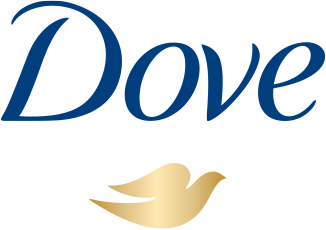
Nair’s Worship Yourself Campaign
Nair recently launched this campaign and has released various ads related to it. Their goal is to promote natural beauty and self confidence. While Nair is a relatively small company, their ads carry a powerful message. Nair aims to show women of all ages that they should be confident in their looks, no matter what obstacles they face.
Neiwai: NO BODY IS NOBODY Campaign
Neiwai is a Chinese lingerie company, and they launched their NO BODY IS NOBODY campaign in 2020. Neiwai’s message is that everybody has a story worth listening to. Looking at our own body, we try to understand its story, which is close to our hearts. Understanding these stories will allow us to learn to respect differences, and cherish diversity, which ultimately leads to appreciating each other.
Neiwai promotes confidence and body positivity in women of all ages, they hope that this message of “Every body has its own story” will help motivate women and help them improve their opinions on their own bodies. The goal is to push forward the fact that all women are beautiful, not only in spite of their flaws, but rather that flaws are what make them so beautiful and unique.
Click here to watch their ad!

Hanes Every Bod Campaign
While many body positivity campaigns are geared towards women, this one primarily focuses on men. The ads in this campaign showcase men with all different body types. This is to help illustrate the point that their products are suitable for a very wide array of customers, and the products look good on all various body types, as well.
Hanes started this campaign for men because they too noticed that many beauty campaigns are based around women. They decided to take the same approach, but for males. Hanes’ ad shows men singing in their underwear, because if you are able to sing in public just wearing underwear, you must truly be comfortable with yourself. Their goal with this campaign was to make men love their own bodies, and join the body positivity movement.
Click here to watch their ad!



